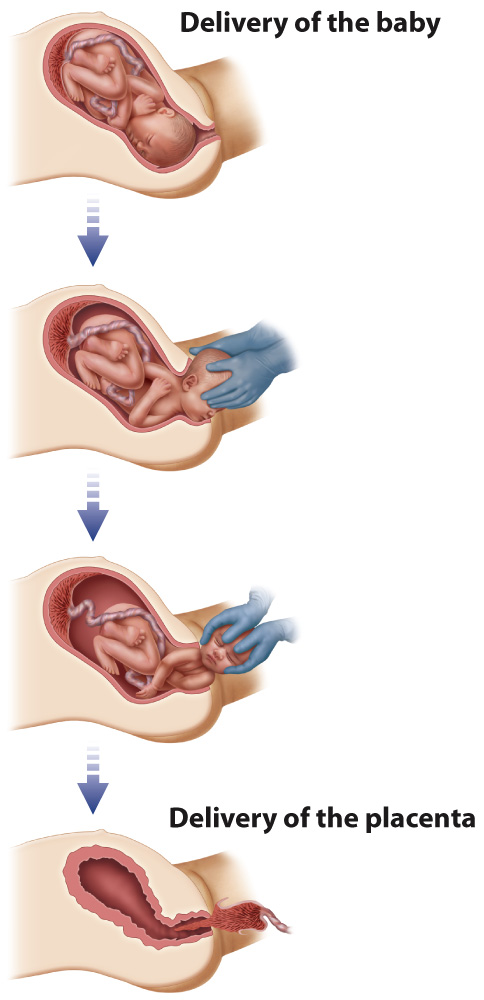Childbirth is initiated by hormonal changes.

Childbirth marks the end of pregnancy. Although we tend to think of childbirth as the delivery of the baby, it actually consists of three events—
During pregnancy, the cervix is a tube about 4 cm long closed with a mucus plug. To allow passage of the infant, the cervix shortens and widens. These changes are not enough to accommodate passage of the baby during delivery. Humans have a narrow pelvis relative to that of other primates as an adaptation for bipedalism. To facilitate its passage through the pelvis, the baby goes through a series of movements (Fig. 42.25). Babies are usually born head first with the face pointing down (toward the mother’s back) when passing through the birth canal. Other positions make vaginal birth more difficult, sometimes impossible.
The third and final stage of childbirth is the delivery of the placenta, which usually occurs about 15 to 30 minutes after the baby is born.
Although birth normally occurs vaginally, in some cases, such as when the baby is too large or positioned feet first, it is necessary to remove the baby by making an incision in the abdomen and uterus in a surgical procedure known as a Caesarian section. Interventions such as Caesarian sections, the use of antibiotics, and pre-
Whichever way the baby is delivered, when the umbilical cord is cut and the baby takes its first breath, it begins its life independent of the mother—